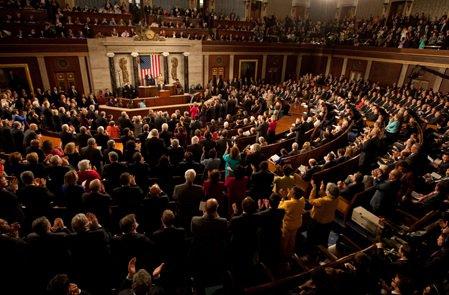Imagine a system of voting entirely different than the one Americans are used to, but which would likely give third parties and even independent candidates a chance to win more fair representation for their views in Congress and create a more robust public policy process. That system could be proportional representation.
Here's how proportional representation works: instead of voting for a single representative to the U.S. House from their geographical district, voters cast their congressional ballot for the party or independent candidate of their choice. Then the parties are awarded seats proportionally according to the percentage of votes they received. Even a minority political party could capture seats in the nation's legislature and showcase their philosophy and ideas in action for the entire nation to see. Another result could be more true transpartisanship as the two larger parties work to build coalitions with the burgeoning third parties.
The cool thing, as Dave Weigel noted last week, is that:
"'You wouldn't actually need a constitutional amendment to get this going. The Constitution (Art. I, Sec. 2) only says this about the membership of the House:The House of Representatives shall be composed of Members chosen every second Year by the People of the several States, and the Electors in each State shall have the Qualifications requisite for Electors of the most numerous Branch of the State Legislature.'"If you wanted to turn the entire House (or Senate) into a proportional body, yes, you'd need to get amendin'. But there's nothing preventing the states from doing this right now. Two years ago, Washington state approved a half-measure, the "jungle primary," in which the top two finishers -- whichever party they're from -- advance to the general election.
Weigel even mentions the top two open primary, or non-partisan primary, that we like so much here as advocates for independent voters. In a way, a proportional representation system would expand on some of the strengths of non-partisan, top two open primaries. These kind of primaries open the field up to more independent voices and potential third party contenders within a certain geographical area-- their congressional district-- and proportional representation could expand that openness even further, really giving voices and ideas outside of the mainstream party duopoly a seat at the table of public policy.
Washington state isn't the only state that has adopted non-partisan primaries; California is another state that has done so. To illustrate just how proportional representation would work, California actually makes a great example because of its whopping 53 delegates to the U.S. House. In a proportional representation voting system, California voters would cast their U.S. House ballot for a single party or independent candidate. If 51% of the votes went to the Democratic Party, it could get to fill at least 26, or as many as 27 seats (depending on how the rest of the votes worked out) in the U.S Congress with its members.
The Republicans would also be given a number of seats proportional to the percentage of votes they received. But under this system, even a small minority of three percent of the voters can win a congressional seat for their party and a representative for their ideas, concerns, political philosophy, and public policy solutions. California's delegation to Congress could easily include a Libertarian Party member, a Green Party member, a Reform Party member, and even some popular independent candidates that can garner as many votes alone as one of the smaller parties.
Again, as Weigel pointed out last week, there is nothing in the Constitution that would necessarily prevent a state from choosing to select its delegation to Congress using the proportional representation system. A nationwide one would likely result in an even more robust representation of political views throughout the country, but the hurdles to achieving such an ambitious and monumental reform make Dave Weigel's more feasible suggestion a potential first step in that direction, especially if reformers focus their efforts on states like California and Washington, that have already exhibited a willingness to experiment with novel voting systems aimed at expanding the conversation and smashing the dominance of the public policy process by two single political parties and their respective entrenched establishments.
California might be the best candidate for the reform because its large number of delegates would be more likely to dramatically showcase the benefits and inclusiveness of the proportional representation system. If it worked, it could lead to a domino effect, with more states adopting the reform and potentially even a viable path to a national proportional representation system wherein every American citizen casts a single ballot for the party or independent candidate of their choice and the entire national sum is proportionally represented in all 435 members of the U.S. House.
